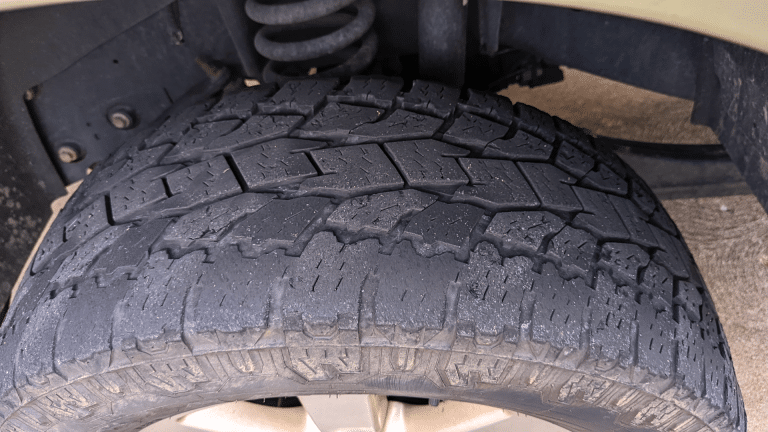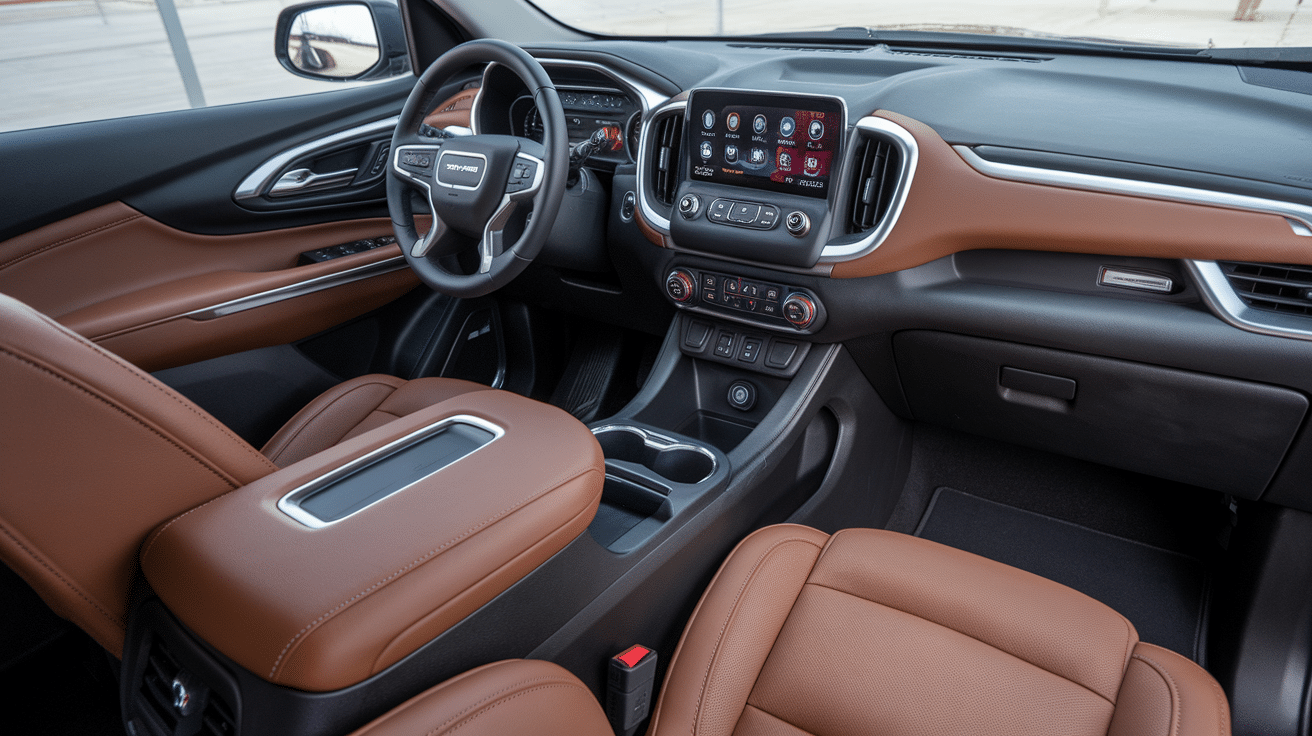Have you ever looked at your tires and thought something seemed off? You’re not alone.
Uneven tire wear is a common issue and can lead to bigger problems if ignored. It’s not just about appearance; it can affect your vehicle’s safety, performance, and long-term costs.
When tires wear unevenly, it can:
- Make your vehicle harder to handle
- Increase your stopping distance
- Raise the risk of a tire failure
- Lead to early and costly replacements
In this guide, I’2aszll explain what causes uneven tire wear, how to recognize the signs, and what you can do to fix or prevent it.
My goal is simple: to help you understand what’s happening with your tires and what steps to take. Keeping your tires in good shape means better driving and fewer surprises on the road.
What Is Uneven Tire Wear?
Tires are like shoes; if they start to wear unevenly, it usually means something’s wrong.
Uneven tire wear occurs when specific parts of the tire wear down at a faster rate than others.
That’s not how it should be. In a healthy setup, tires wear evenly across the surface, kind of like a balanced haircut.
However, when you notice strange patterns, bald spots, or edges that wear more than the center, it’s often a sign of deeper problems with alignment, suspension, or tire pressure.
Let me break down the most common types of uneven wear you might spot:
- Center wear: When the middle of the tire looks more worn than the edges
- Edge wear: Tires look more worn on the sides
- Cupping wear: Looks like someone took little scoops out of your tire
Why does this matter to you? Uneven wear can:
- Reduce your car’s grip on the road
- Increase stopping distances
- Waste your hard-earned money on early tire replacements
Pro tip: Regular tire checks can save you serious cash and keep you safer on the road. Your tires are literally where the rubber meets the road, so pay attention to them.
Common Causes of Uneven Tire Wear
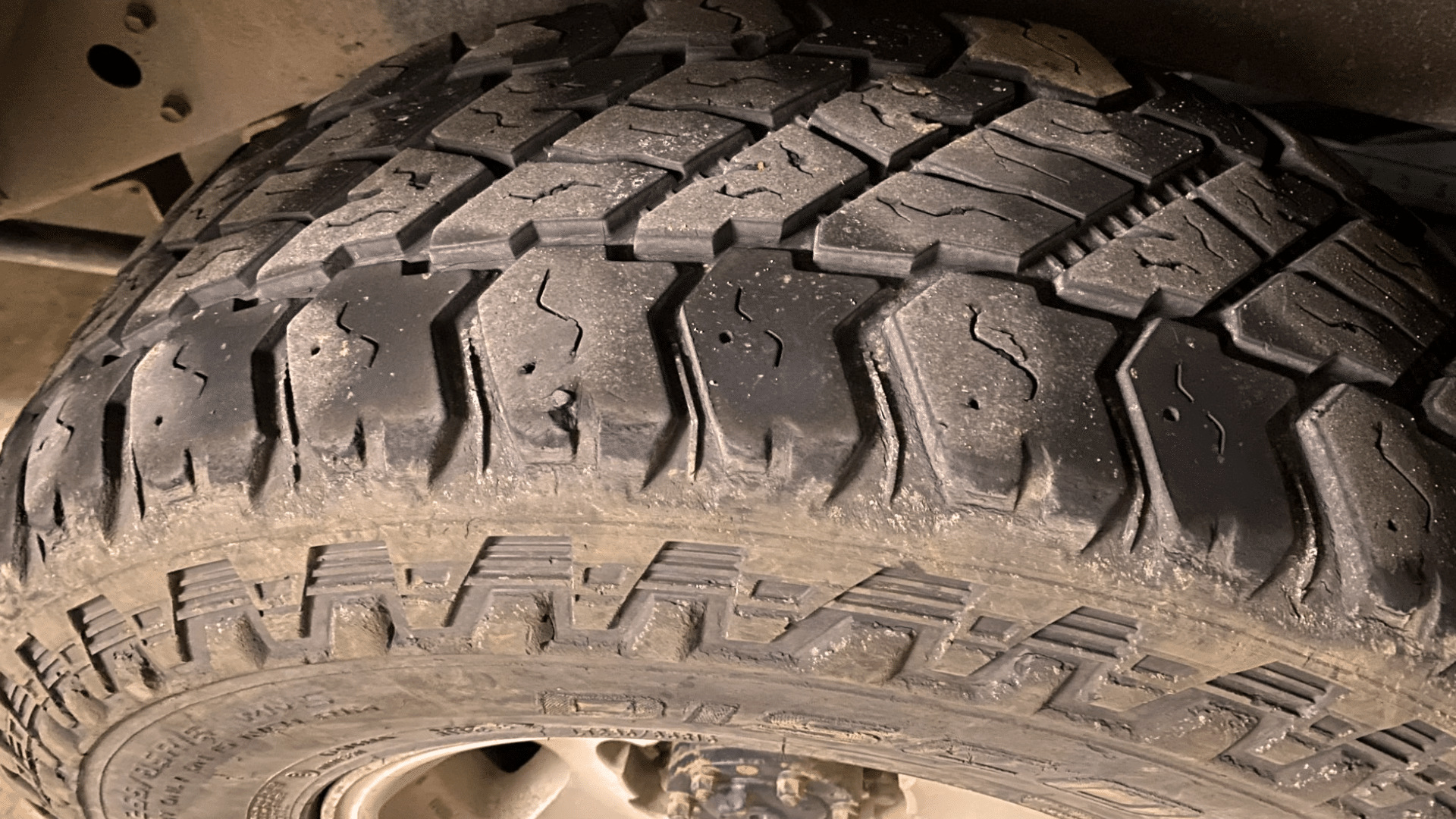
Ever wonder how tiny problems can create big headaches for your car? Let me give you an overview of the sneaky culprits behind uneven tire wear.
1. Improper Alignment
Remember that time you hit a massive pothole? Your tires might be paying the price.
Alignment is like your car’s posture. When it’s off, your tires start wearing down unevenly.
That quick bump against a curb can throw everything out of whack, making your tires work harder than they should.
2. Incorrect Tire Pressure
Tire pressure is more than just a number. Too little air? Your tire’s edges wear faster. Too much?
The center gets more action. It’s like wearing shoes that don’t fit right – uncomfortable and damaging.
Most people check their phone battery more often than their tire pressure.
3. Worn Suspension Parts
Think of suspension as your car’s shock absorber. When these parts wear out, your tires take the beating.
Bumpy rides aren’t just uncomfortable – they’re slowly destroying your tires. Each bounce and jolt changes how your tires touch the road.
4. Unbalanced Wheels
That shake you feel while driving? It’s not just annoying. Unbalanced wheels are like a dance partner with two left feet.
They cause vibrations that eat away at your tires, one rotation at a time. A quick balance can save you hundreds in tire replacements.
5. Driving Habits
How you drive affects your tires more than you might realize. Hard braking, sharp turns, and carrying uneven loads can all cause tires to wear out faster.
Driving smoothly and steadily helps your tires last longer and wear more evenly.
A little care goes a long way, and regular checks can save you money and keep you safer on the road.
Signs and Symptoms of Uneven Tire Wear
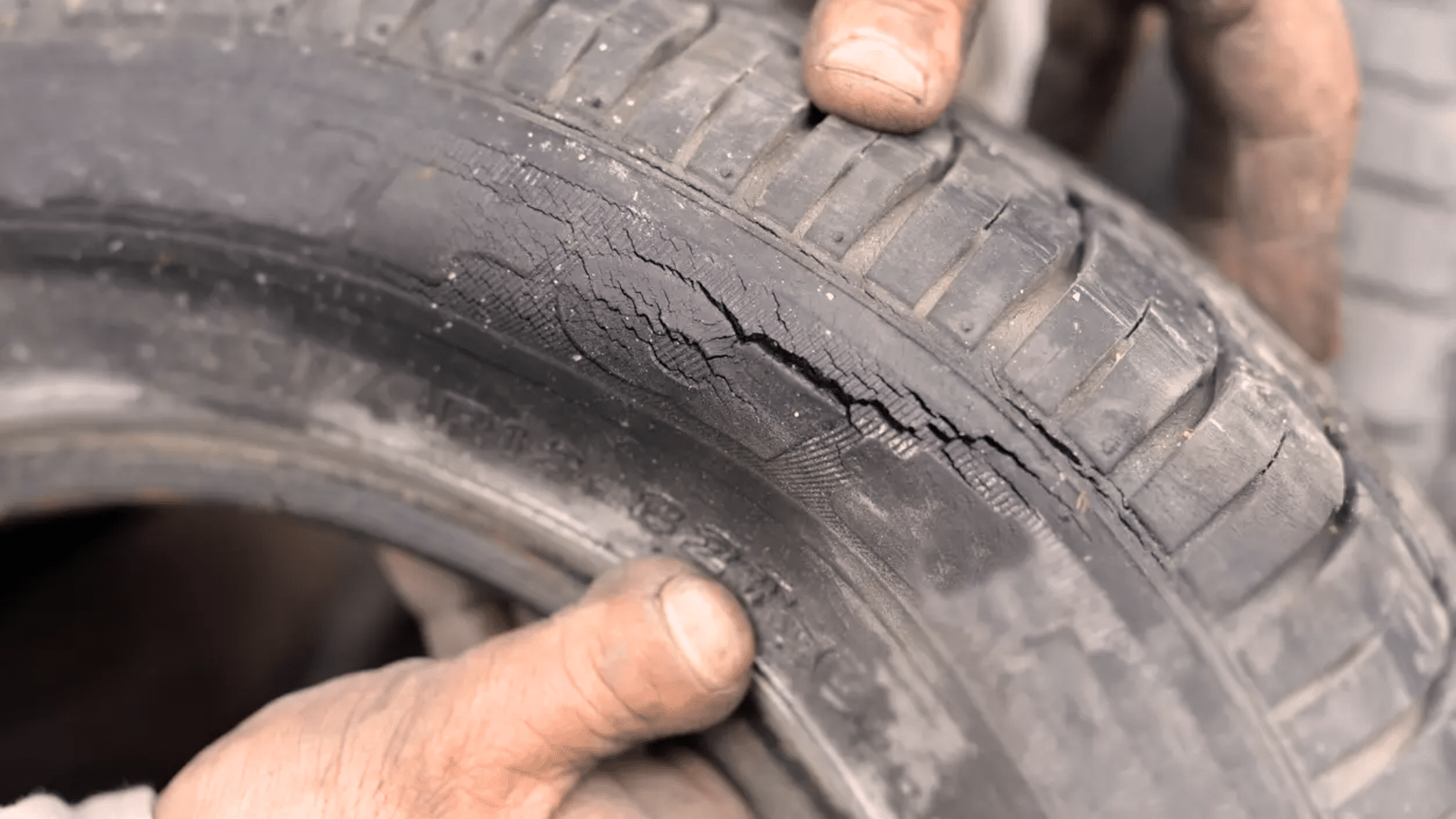
1. Visible Wear Patterns
Tires can show you a lot about your vehicle’s condition if you pay attention.
Flat spots, worn edges, or uneven tread aren’t just surface problems; they’re signs that something might be wrong.
When I check tires, I look for wear patterns that point to alignment issues, suspension problems, or driving habits that need adjusting.
2. Pulling to One Side
Does your car pull to one side when you’re driving straight? That’s often a sign of uneven tire wear.
It’s not a mystery; it’s usually a clue that your tires or alignment need attention.
A car should steer straight without you constantly correcting it. If it doesn’t, it’s time to check your tires.
3. Vibrations or Shaking
High-speed vibrations aren’t normal; they’re a sign that something’s off.
If your car starts to shake at higher speeds, it could mean your tires are wearing unevenly and not staying in proper contact with the road.
It’s a clear signal to check your tires and balance.
4. Noisy Ride
Pay attention to any strange sounds, like humming or thumping, while you drive.
These noises can be signs of tire problems such as cupping or feathering. Tires in good shape should roll quietly, so if things sound off, it’s worth checking them out.
Pro tip: Your routine maintenance is the perfect time to play tire detective. Take a few minutes to look, feel, and listen. Your wallet and safety will thank you.
How to Fix Uneven Tire Wear?
Fixing uneven tire wear is straightforward. With a few practical steps, you can extend your tire life, improve safety, and avoid extra costs.
1. Rotate Your Tires
Tire rotation is one of the simplest ways to help your tires last longer. I recommend rotating them every 5,000 to 7,500 miles.
By moving the tires to different positions, you help them wear more evenly.
It’s a small task that makes a big difference in keeping your ride smooth and your tires in good shape.
2. Get a Wheel Alignment
Running over a pothole can throw your wheels out of line. To fix it, getting a proper alignment is key.
A professional alignment helps your tires wear evenly and can save you money over time. After a hard hit or every few months, it’s smart to have your alignment checked.
3. Check Tire Pressure Regularly
Checking your tire pressure once a month can make a big difference.
Low pressure wears out the edges faster, while high pressure wears down the center. A simple gauge helps you stay on top of it.
Most gas stations have air pumps you can use for free. For the best reading, check the pressure when your tires are cold.
4. Inspect Suspension and Shocks
Suspension parts wear out quietly. During your next oil change, ask your mechanic to take a look.
These hidden heroes impact how your tires contact the road. Catching issues early means avoiding expensive repairs later.
Pro tip: Think of these steps like health checkups for your car. A little prevention goes a long way in keeping your ride smooth and your wallet happy.
Preventing Future Tire Wear Issues
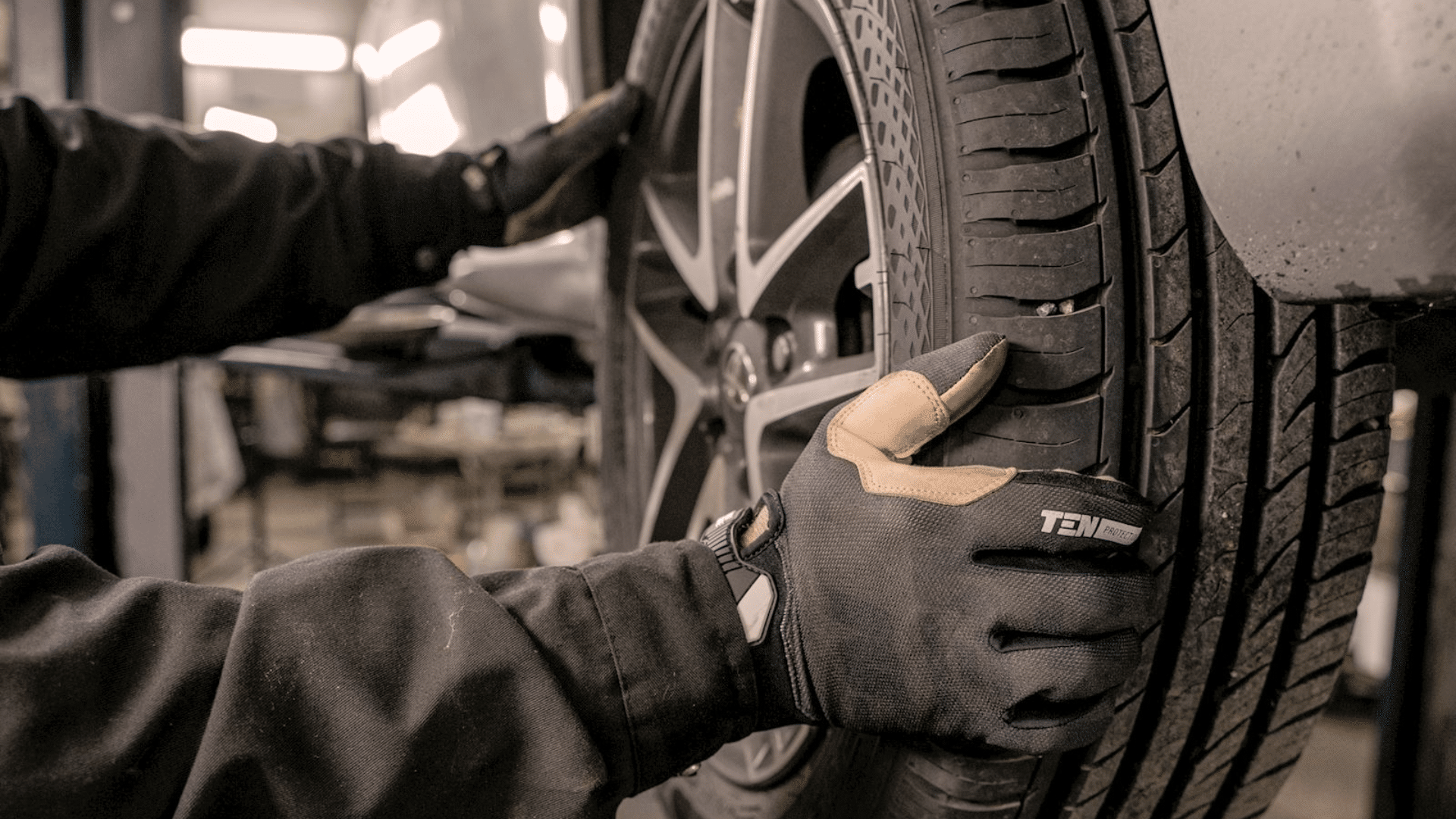
Tire maintenance isn’t a chore; it’s your car’s survival guide. Let me share some street-smart tips to keep your wheels rolling smoothly.
1. Digital Reminders are Your Friend
Your smartphone can be a tire-saving superhero. Set monthly reminders for tire pressure checks and rotations.
I use my phone for everything else, so why not tire care? Most phones let you create repeating alerts faster than you can say “check tire pressure”.
2. Listen to Your Car’s Language
Cars give you signs when something’s wrong, they just do it through movement and sound.
If your vehicle starts pulling to one side, shaking, or making strange noises, it’s time to take a closer look.
These changes often mean tire or alignment issues. Paying attention early can help you avoid bigger problems later.
3. Smooth Driving Saves Tires
Driving with care can make a big difference in how long your tires last. Avoid potholes when you can, and take it slow on rough roads.
Smooth acceleration, gentle braking, and steady turns help reduce stress on your tires. A little caution goes a long way.
4. Weight Matters
Overloading your vehicle puts extra strain on your tires and suspension.
Before a road trip or big move, check your vehicle’s weight limits. Spread the weight out evenly to avoid putting too much pressure on one area.
It helps your tires wear evenly and last longer.
Conclusion
Tire wear is normal, and it happens to every driver. Even if you’re careful, it’s something you’ll deal with over time. The good news is that uneven wear can often be fixed with simple steps.
Your tires play a key role in how your vehicle handles and stops. Taking care of them now can help you avoid extra costs or safety issues later.
This could be as easy as checking tire pressure, watching how you drive, or noticing if the ride feels off.
By going through this guide, you’ve already done more than many drivers. A lot of people wait too long to check their tires, but you’re taking action early.
Start by giving your tires a quick check today. Look for signs of uneven wear, and stay consistent with basic maintenance.
It doesn’t take much time, and it helps keep you and your car on track.


